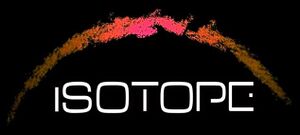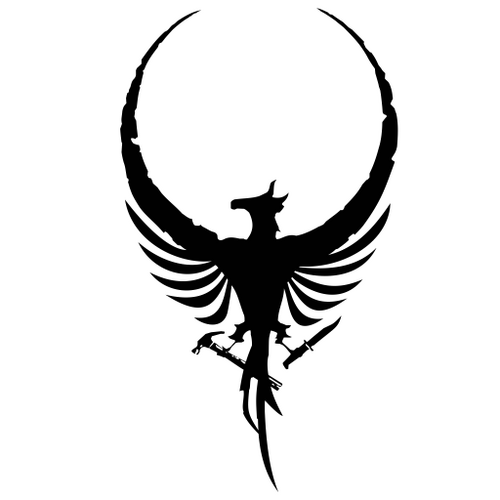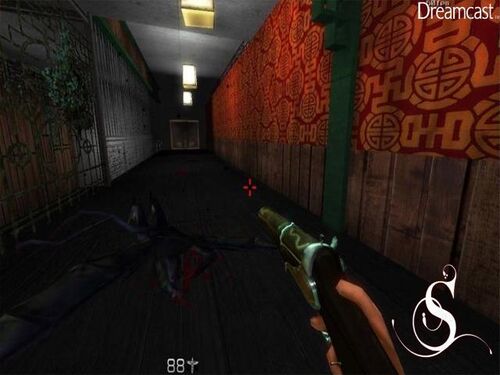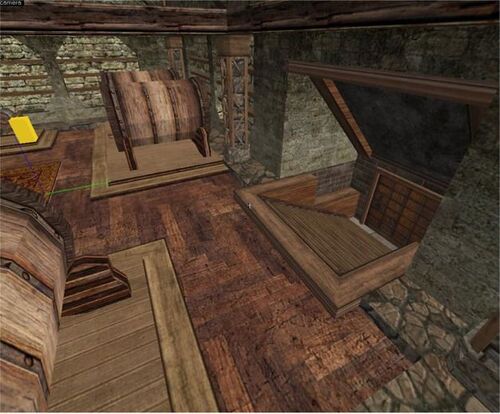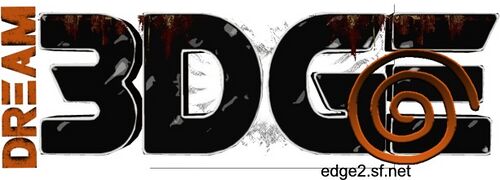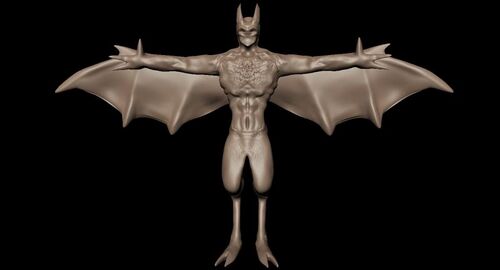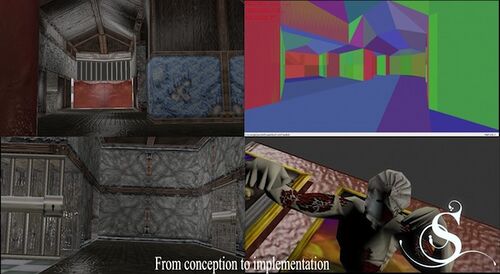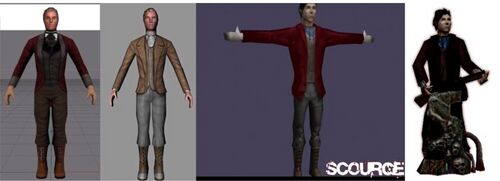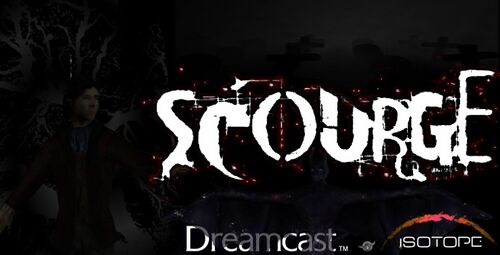Isotope Studios
Isotope Studios was an independent game development group known for the unreleased games Scourge and Hypertension: Harmony of Darkness using the Dream3DGE Engine.
See also:
Interview
Isotope Studios is an independent game developer currently working on its first two games: Scourge and Hypertension: Harmony of Darkness.
Both games are 3D horror games for the SEGA Dreamcast, though a release date has not yet been set.
In This Interview
Corbin Annis - Creative Director, Lead Designer
Bruno Aste - Lead Artist
Jason Johnson - Lead Modeler
Interview
So you've got two games in the works right now: Scourge and Hypertension. Can you start by telling our readers a little bit about each game?
CORBIN: Sure thing! Hypertension: Harmony of Darkness (HoD) is a first-person arcade-style game, heavily influenced by Monolith's shooter, Blood. It uses our in-house 3DGE engine, which itself is a heavily modified DOOM engine, and supports things like 3D models, true 3D floors, and awesome dynamic lighting. Other enhancements include a splitscreen mode for two-player deathmatch or cooperative play. Hypertension is basically a story about a man risen from the dead to avenge the death of his lover. Over the course of the game, he fights his way across the 1920s United States to take down a psychotic cult before they can resurrect dark beings known as the Deep Ones. This leads directly into Scourge's main story.
Scourge is a 3D psychological thriller, using a hybrid first-person/third-person system. It is powered by the award-winning Quake 2 engine, which served as the technology for such games as Soldier of Fortune, SiN, Anachronox, and Half-Life. Set in 1928, you play as Kaiven, a P.I. hired to find a mad scientist's wife who had run away 20 years earlier. However, when Kaiven arrives in the small coastal town of Miskatonik, he learns that there's more than meets the eye to this haunted locale, and he soon finds himself battling otherworldly monsters and spirits.
BRUNO: Scourge is a first- and third-person survival horror game partly inspired by the works of HP Lovecraft and classic horror films and video games. It takes place during the 1920s, which is a great setting for incorporating literary concepts related to the Lovecraft mythos, such as the idea of cosmic horror and early sci-fi. This goes a long way in helping us to create an immersive world to set the narrative in.
Over the last decade or so, first-person shooters have put an increasing emphasis on telling a detailed story. It sort of started with Half-Life and has ultimately led to games like BioShock: Infinite, which some would say focus more on story than on the gameplay. How big a role does the story play in Scourge, and as a game designer, how do you balance that with gameplay?
CORBIN: Story plays a role, yes, but we have taken some design cues from Alone in the Dark and the more recent Resident Evil 4. In AitD, the story progresses through text books (no cutscenes), which keeps the focus on gameplay, but if players don't catch all of the references, they don't really get the story. RE4 has a few cutscenes, but the story mostly unfolds quick interludes that don't hamper the gameplay experience. The cutscenes are very short and sweet. Fatal Frame II plays much like this, too, so we're trying to take cues from games that do as little as possible to interrupt the player from the game. I feel story nowadays holds your hand and forces you through long dialogue and boring sequences. They are bombastic and can be entertaining, but these long cutscenes ends up making many titles just as much a movie as a game nowadays. The interactivity isn't there like it is in, say, Half-Life 2 or Doom 3.
BRUNO: The way I see it, there have been some steps forward and some steps back when it comes to storytelling in first-person shooters. However, I would be more inclined to think of Scourge as a horror game first, which just happens to have a first-person twist, since I believe the horror genre has been doing story very well over the last decade and even longer. The pacing of the story and how it interacts with the gameplay aspects has been nailed on the head over and over by many titles, both from Japanese and western developers.
Hypertension was based on an earlier project called Blood. How did that project evolve into its current form, and how does Hypertension tie into Scourge?
CORBIN: Atari. There were licensing issues that we faced when Atari got involved with Blood/Hypertension, and since we are independent and were not sponsored at the time, we decided to put it on the backburner. When we got sponsored a few months later, we were given a choice: redo those assets, or start fresh. Since I've been swirling a game idea around my head for years, we decided to start fresh and abandon the previous game.
We initially started developing Scourge on the 3DGE engine, but I quickly learned that the game was too complex for the engine to handle, so we chose the Quake 2 engine as a replacement. However, the Quake 2 engine is nothing like the Quake 1 engine (which we had more experience with), and it took us several years of hacking it up to get it to support the kind of game we wanted to create.
Scourge itself went through a dozen redesigns away from the original Hypertension concept, but there are still many similarities, and ultimately we decided to tie the story together with Hypertension: HoD. Since HoD restarted development earlier this year, the tie-in was a no-brainer, and many fans were happy. I mean, if Game Informer shared it on their website (in 2009, I think), then it was something special that I felt could evolve away from all of the original Blood assets we used. The assets were thrown out, we'd written something like 10,000 lines or more of code, so that stayed. I make modifications as necessary to adapt the game to the revised concept, but overall the game was already about 85% complete.
Isotope was formed specifically to create Scourge. What got you involved in Dreamcast development, and how did the team come together?
CORBIN: I've always had a soft spot for the Dreamcast, so it was an easy choice. I used to be in awe of the homebrew created for it. So a few years ago, I teamed up with Chui to bring Hypertension to the Dreamcast. After I saw it running, I knew that's where I wanted to be. After the Hypertension project bombed, well, the rest is history. Our sponsor contracted us for a new game, and slowly but surely, a full development team was formed.
Old message boards formed for Quake 2 were prominent in the late 90s and early 2000's, but with the closure of Gamespy, a lot of those were lost. I rifled through message boards and found an interested person who loved the idea and concept. From there, we just hit all of the old hangouts, but nobody was really interested in working on a deprecated technology. At that point, Bruno had a great idea: asking designers who worked with Hammer, Valve's Source engine. Since the Source engine started with Quake 1's codebase, we found that levels can be converted back and forth with relatively little effort. So, he got the genius idea to start pursuing these people, and now two of our level designers map in Hammer, which Bruno ports down. He uses Radiant, which is native Quake 2, so some details are lost… but overall, it's a great system.
BRUNO: It certainly wasn't easy to get talented artists working on a Dreamcast game, and it's been even harder to handle the problems that come with working with stuff like legacy formats and old tools/hardware that are often undocumented. it's been an uphill battle, but the team is always learning and building on that experience. Recruiting was hard, since it just wouldn't cut it to get a talented person to work on the project. There was a shift in the way we handled development, so now technical skills are just as important--if not more so--than raw talent or creativity. Problem-solving fills most of our schedule these days, so the modding community is where some of our hardest-working members come from.
JASON: I know, for me, Dreamcast development has always been a passion. I can remember when I first saw Sonic Adventure in 1999: the sheer feeling of awe I had for the overall experience of the Dreamcast. No system before or since has made me feel quite the way the DC does. I was engulfed early on, and as 2000 came to a close, I remember thinking, "This is what I want to do with my time!"
Of course, back then I had nothing but pure passion. I researched graphics programs to get a feel for how it was done, and I spent hours reading and doing tutorials just to find out how game design actually took place. Needless to say that back then, I was in WAAAAY over my head. So it goes that the passion boiled back up periodically throughout the next decade, leaving me with little else but dreams and a lot of used space on my respective hard drives.
One day, the itch got the better of me, and I felt the need to find out what sort of Dreamcast development people had undertaken in the generation of PS3s and 360s, so I again started gathering tools and researching. Then, I came across images and info for Isotope's project, and was literally amazed by the information and resources these guys were involved with. To see other people with the kind of passion that I had for the off-white box ended up drawing me in closer, and I contacted the team to commend them on their work. One thing led into another, and before I had a chance to second-guess myself, I was passing off models and issuing character designs to help with this current project.
I honestly haven't looked back since I began, and have this sense that I can finally be incorporated with a group of people who can or have seen and experienced the sheer magic of the Dreamcast. To me, it truly is a timeless machine, and I feel it's poised for a serious revival in the indie scene.
The Dreamcast was released in 1998 in Japan, and 1999 for the rest of the world. That's a 15-year-old piece of hardware, and most of us carry around cell phones that would put it to shame in terms of horsepower. Have you needed to change your game designs at all after running into limitations?
CORBIN: No, we did the smart thing: designed Scourge with the hardware in mind. There's nothing that we've had to scrap because of hardware limitations, and choosing an engine that would work well on the system ended up being a great thing. However, that's not saying it's been easy to port; the programmer in charge of the port had to rewrite the renderer and all sorts of other things. The lead programmer spliced all kinds of things into the engine… for example, some from Return to Castle Wolfenstein, which powers our heavily modified camera code. id Technology really ports well back and forth. We've been extremely lucky with the talent behind our project.
BRUNO: There are still people porting engines and games for the Atari and Amiga systems from the late 80s and early 90s. Call it a labor of love, but for us it's quite a challenging goal we set out to accomplish, to use just enough polygons, textures, and effects in order to tell our story without bogging the game down. As far as design limitations go, there haven't been many that I can remember, since we're building the game from the ground up with the target platform in mind. There was some friction in the development pipeline very early on, but we got it ironed out pretty quickly.
What sorts of development tools have you used to create these games?
CORBIN: Oh boy, everything from Radiant to Hammer and back. The modeling programs are interesting: we design an extremely high-poly model, bake the details into a model (1K polys or less for characters), and piece them together that way. It's a really interesting way to do it, and I doubt many teams do this. That's why we're able to get so many details into the skins. It makes them appear that their polygon count is off the charts, but really, everything is designed with limitations in mind. Some old programs from the Quake 2 era (dated, not old-school, so they are a pain in the ass to work with), some from the DOOM era, and lots from this era. It really depends on what we're doing.
BRUNO: We're trying to use free tools whenever we can, so our developers don't have to struggle with formats and licenses. There's a lot of Gmax, Netradiant, Quark, Blender, Sculptris, Gimp, Xnormal, Misfit3d, and even some old, obscure--but freeware--applications from back in the day for handling skins and non-proprietary formats such as md2.
Do you have any advice for a new developer who might be interested in creating a title for Dreamcast?
CORBIN: Yep: EXPERIENCE! Get your experience as early as you can. Designing something easy like Hypertension (I served as lead programmer, as well as occasional modeler/level designer/etc.) where you can acquire all of those skills is a must. Get your name and your game out there. If it wasn't for Diehard GameFAN and Game Informer, we might not be anywhere at all. Show people you have something under your belt, as something like 95% of projects fail in their first year. If you already have something completed that you can point to, people will love you so much more, and actually believe in what you're trying to accomplish. Take it from me!
BRUNO: If you're interested in developing a title for a 15-year-old console, you either already know what you're getting into, or you're about to learn the hard way.
A good place to start is to do the math on how much power the Dreamcast really has in terms of polygons rendered on screen each frame, and plan accordingly either to go for a full 60 fps or make the (likely) compromise to go for 30 fps. Calculate how big a texture you need to fill the console's RAM when loading a level with them, plan out what the poly count will be across different game assets, optimize the level design (which is most of what the engine is doing at any given time), study the Dreamcast's graphics infrastructure (for instance, one difference from modern hardware is that you have no shaders to work with), plan out which features you will cut when forced to make a compromise, and determine what is essential to telling your story and what is just padding that looks cool but maybe you can do without.
Last but perhaps most important would be to work with a precedent. If someone has made something happen on the Dreamcast or an earlier console, chances are you can do it. This of course goes not only for the technical aspects, but also when it comes to the art department; we humbly stand on the shoulders of giants.
While it may seem like a safe bet for an independent company to develop for older hardware and not have to deal with shaders and all those new thingamajigs, you have to remember this is still a full-time job. I recently saw a progress report from indie game developer explodingrabbit, and it's a great watch because it clearly shows that even though some team members can work on a title part-time, you need someone to work full-time on the project if you're expecting it to get anywhere. Even with the funding they had from their website and donations (something we lack), they're aiming for a 2014 release. Also unlike us, they are working on a 2D platformer for Windows or browsers, so our project has more quirks and potential hiccups than your typical indie title.
The biggest investment you can make is investing time to get in there and get your hands dirty!
JASON: My advice is quite frankly to "do your homework!" It's essential to educate yourself on the respective ins and outs of your specific hardware, middleware, and software. Especially in the case of the Dreamcast, where most of its true innovations and capabilities were discovered late in--or even after--its normal life cycle, it is incredibly important to know your stuff! There's a lot of documentation out there for any prospective teams looking to devote their time to a project on SEGA's beloved box, so look sharp!
It also pays to find a team that suits your ambition and has a suitably technical approach to their ideas and how to bring them about. But even through knowing the limits and specs, stay with what you're passionate about. Getting started could be as simple as modding some assets in an engine, or simply getting a sprite to animate as it moves a few pixels, but you can only ever truly be limited by your drive and resoursefulness!
When will we able to get Scourge and Hypertension, and how much will they cost?
BRUNO: I'm going to go out on a limb and estimate mid to late 2014. But clear dates and other specifics are beyond my ability to predict at this point.
Are you planning any future titles once Scourge is completed?
CORBIN: I've kicked the ball around, but nothing is certain as of yet. A project called Nightmare Onida is probably what we'll do next, which is a similar type of game to Scourge, but you never know. We've covered first-person shooters, third-person shooters, so maybe a platformer, sidescroller, who knows? Time will tell.
DCEmulation.org extends a special thank you to the members of Isotope Studios for taking the time to participate in this interview, and for supplying the included screenshots and development images.
External links
[1]Isotope Studios [2]Isotope Studios (Facebook) [3]3DGE engine (SourceForge)
Interview conducted by DaMadFiddler via email on 9/18/13 for DCEmulation.org
